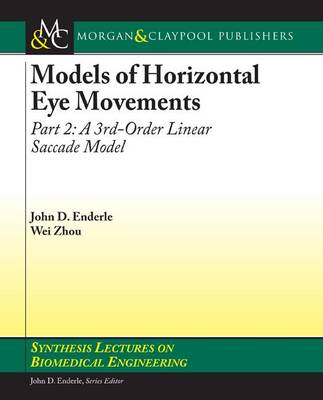Synthesis Lectures on Biomedical Engineering
2 total works
There are five different types of eye movements: saccades, smooth pursuit, vestibular ocular eye movements, optokinetic eye movements, and vergence eye movements. The purpose of this book is focused primarily on mathematical models of the horizontal saccadic eye movement system and the smooth pursuit system, rather than on how visual information is processed. A saccade is a fast eye movement used to acquire a target by placing the image of the target on the fovea. Smooth pursuit is a slow eye movement used to track a target as it moves by keeping the target on the fovea. The vestibular ocular movement is used to keep the eyes on a target during brief head movements. The optokinetic eye movement is a combination of saccadic and slow eye movements that keeps a full-field image stable on the retina during sustained head rotation. Each of these movements is a conjugate eye movement, that is, movements of both eyes together driven by a common neural source. A vergence movement is a non-conjugate eye movement allowing the eyes to track targets as they come closer or farther away. In this book, a 2009 version of a state-of-the-art model is presented for horizontal saccades that is 3rd-order and linear, and controlled by a physiologically based time-optimal neural network. The oculomotor plant and saccade generator are the basic elements of the saccadic system. The control of saccades is initiated by the superior colliculus and terminated by the cerebellar fastigial nucleus, and involves a complex neural circuit in the mid brain. This book is the second part of a book series on models of horizontal eye movements.

